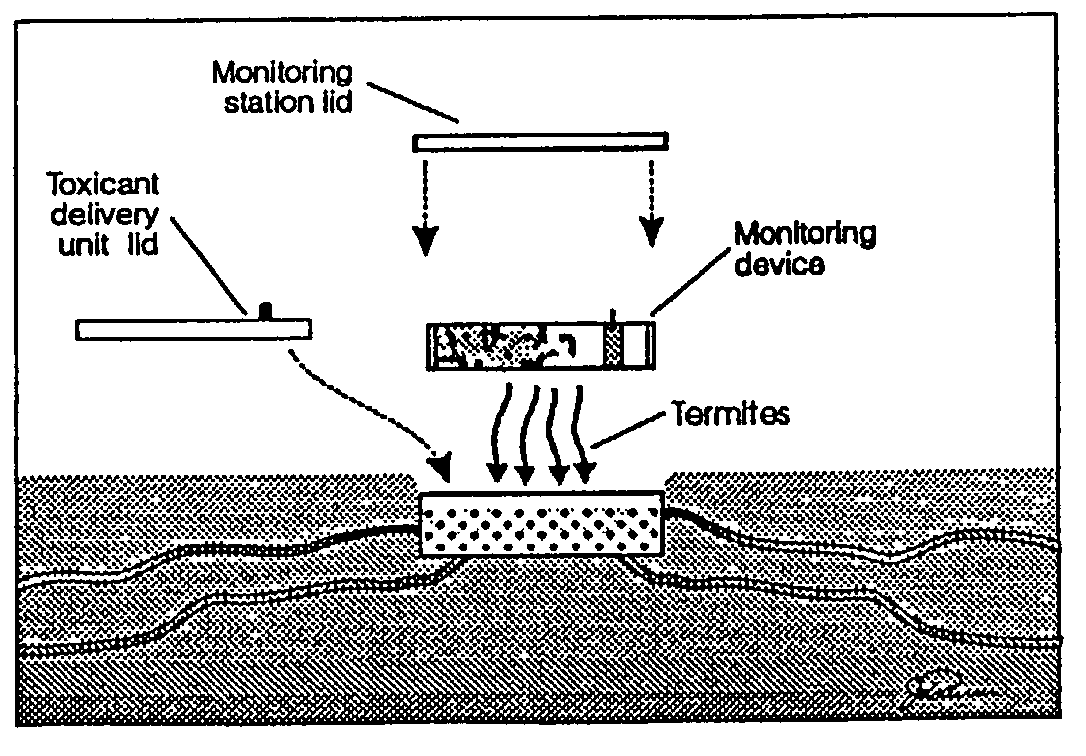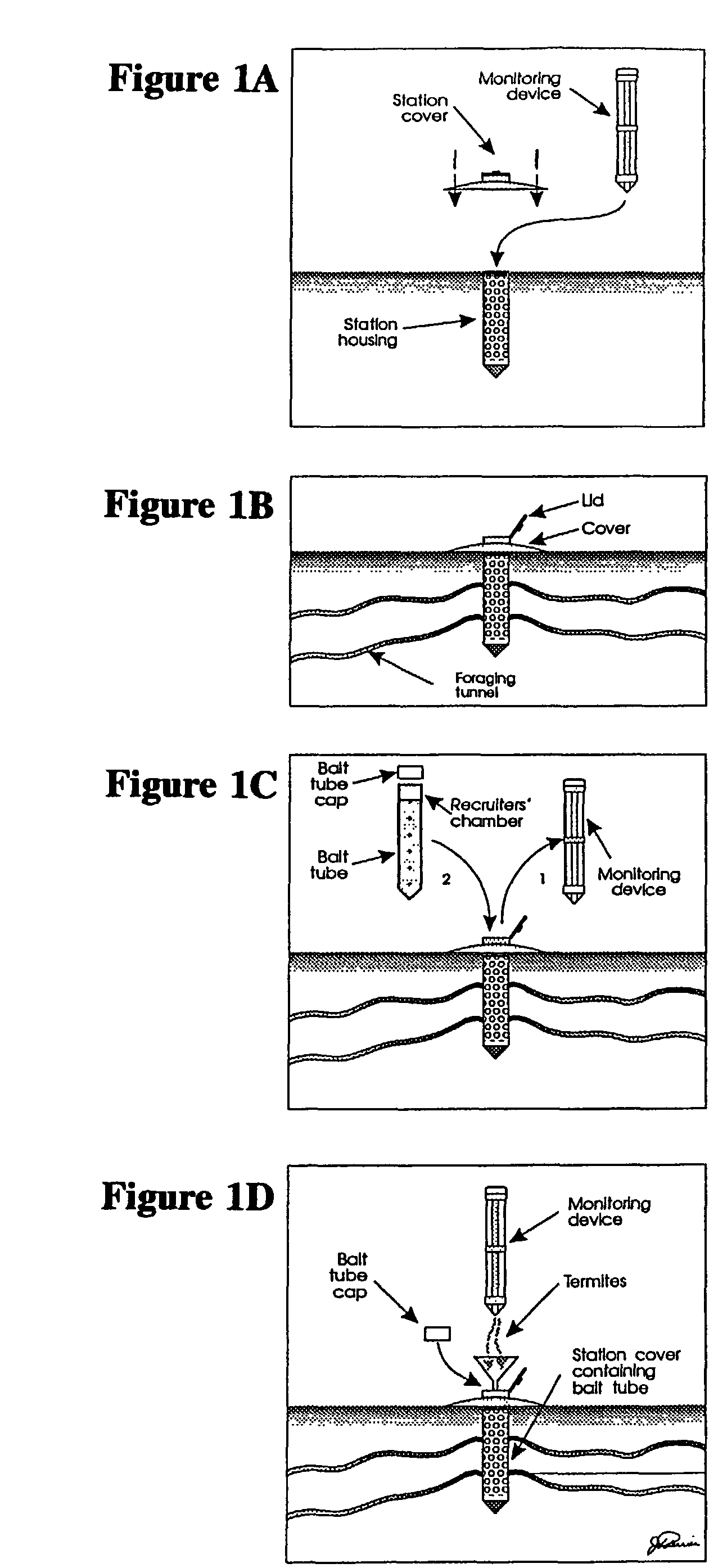Remote monitoring system for detecting termites
a monitoring system and termite technology, applied in the field of remote monitoring system for detecting termites, can solve the problems of limited quantity and coverage of toxicant use, and achieve the effects of reducing the risk of exposure, facilitating and safe service, and increasing the intake of toxican
- Summary
- Abstract
- Description
- Claims
- Application Information
AI Technical Summary
Benefits of technology
Problems solved by technology
Method used
Image
Examples
example 1
Integrated Pest Management System for the Control of Termites
[0074]One example of how methods of the subject invention can be applied to the control of subterranean termites is as follows:[0075](a) Placement of the station housing and monitoring device. A hole of appropriate dimension can be made in the soil for positioning of the station housing. The station housing is placed into the hole. The monitoring device is placed inside the station housing. A cover can be placed over the station housing and the cover secured to the surface of the ground. Alternatively, the monitoring device can be placed inside the station housing which is then inserted or hammered into the soil until the station housing opening is near the soil surface. Also, the monitoring article or station housing may be placed horizontally on the ground or beneath the soil surface.[0076](b) Inspection of monitoring devices. The monitoring device can be inspected periodically for evidence of termite infestation by visu...
example 2
Preparation of Toxicant-containing Matrix
[0078]The toxicant-containing matrix can comprise cellulose, preferably in the form of a powder or small particles, and the active ingredient of a toxicant. Cellulose in the form of powder allows for a more homogeneous mixture of cellulose and toxicant and facilitates packing and handling. A humectant component can be added to the matrix to maintain moisture content. In one embodiment of the invention, a Methocel® solution of about 1% to about 5% can be used effectively. Methocel® is particularly advantageous because it is a non-nutrient humectant that does not allow microbial growth. An about 1-2% solution is preferred. Moisture content can be varied according to the preferences of different termite species. A preferred embodiment of the invention employs a matrix comprising sawdust as the cellulose component, and water sufficient to yield a moisture content of approximately 50% to about 90% by weight. A moisture content of about 60-80% is p...
example 3
Construction of Station housing
[0085]In one embodiment of the invention, the station housing can comprise a rigid tube which is pointed at one end and closeably open at its opposite end. The tube is preferably made of a non-biodegradable, durable material which is not attractive to, nor eaten by, termites. The station housing should be made of a material which resists decay or corrosion when exposed to moisture, especially when buried underground for a period of time. The texture of the station housing may be coarse. The station housing will typically comprise entry points which enable termites to have access to the monitoring device or toxicant-containing matrix within. These entry points should not be so large or numerous as to compromise the durability or structural integrity of the station housing or allow dirt or debris to readily enter the inner chamber of the station housing. However, the entry points should be sufficient to provide ready access for termites to the materials ...
PUM
 Login to View More
Login to View More Abstract
Description
Claims
Application Information
 Login to View More
Login to View More - Generate Ideas
- Intellectual Property
- Life Sciences
- Materials
- Tech Scout
- Unparalleled Data Quality
- Higher Quality Content
- 60% Fewer Hallucinations
Browse by: Latest US Patents, China's latest patents, Technical Efficacy Thesaurus, Application Domain, Technology Topic, Popular Technical Reports.
© 2025 PatSnap. All rights reserved.Legal|Privacy policy|Modern Slavery Act Transparency Statement|Sitemap|About US| Contact US: help@patsnap.com



